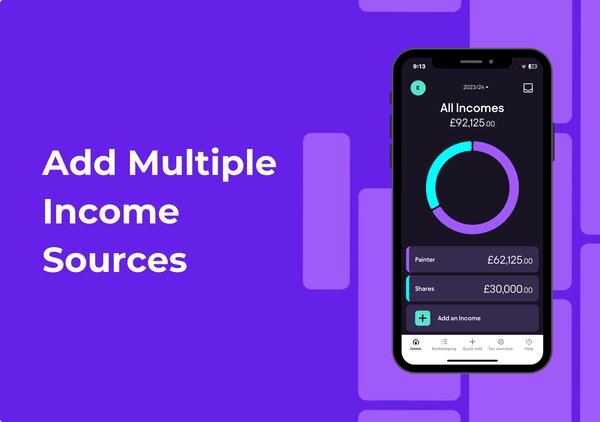Lets break it down...
Dealing with HMRC doesn’t have to be the headache it’s often made out to be. Yes, they have a reputation for long wait times, but knowing the right way to get in touch can save you hours of frustration.
The UK’s first personal tax app, Pie tax, can help you prepare all the information you need before contacting HMRC, potentially saving you from making the call at all. There are a range of contact options available, you can contact HM Revenue through official channels, and HMRC contact numbers are provided for different services to help you reach the right department. Or if you’re just here to get to grips with it all, let’s break it down!
Getting in touch with HMRC (HM Revenue and Customs) is a key part of managing your tax affairs, whether you’re an individual or a business. With a range of contact options available, you can choose the method that best suits your needs, be it phone, online services, or post. For many, the quickest way to access tax information, submit a tax return, or claim a refund is through HMRC’s online services, such as your Personal Tax Account.
If you need extra support, HMRC offers dedicated services to help. The extra support team can assist if you have personal circumstances that make dealing with tax more challenging. For those who use British Sign Language, a BSL video interpreter service is available, making it easier to communicate with HMRC staff. Whether you’re looking to claim a tax refund, sign in to your online account, or simply need guidance.

Reasons for Contacting HMRC
There are plenty of reasons you might need to contact HMRC. One of the most common is to file a Self Assessment tax return, especially if you’re self employed or have income outside of PAYE employment.
If you think you’ve paid too much tax, you can contact HMRC to request a tax refund and get your money back. Other reasons include checking your PAYE details, asking about tax codes, or getting guidance on assessment tax return issues.
If your personal circumstances change, such as a new job, a change in income, or starting your own business, it’s important to update HMRC so your tax is calculated correctly. HMRC’s online services and helplines are there to answer your questions, whether you’re looking for help with filing, need to request a refund, or want to check the status of your tax return.
No matter your situation, having the right contact details and information ready will help you get the answers you need quickly.
What Are Your HMRC Contact Options?
When it comes to reaching HMRC, you’ve got several routes to choose from. Each has its pros and cons depending on your query and how quickly you need an answer. HMRC has dedicated phone lines and telephone support for different queries. The Self Assessment helpline (0300 200 3310) is your go-to for tax return questions. It’s open Monday to Friday, 8am to 6pm, but avoid calling at month-ends and near tax deadlines. Always check HMRC's opening times before calling, as phone lines are closed on bank holidays.
For quick queries, HMRC’s webchat service can be brilliant. You’ll find it on the relevant tax page of the GOV.UK website, connecting you with an advisor without the phone queue. There is also a digital assistant available on HMRC online services, which can help direct you to the right resources or live chat options.
If your question isn’t urgent, sending a secure message through your Government Gateway account creates a helpful paper trail. You can also use an online form for certain requests, and HMRC online services provide access to these online forms for submitting inquiries or complaints.
Old school? You can still write to HMRC. You can send mail to their official address, and mail is a traditional way to contact them. Just make sure you use the correct address for your query type, which you’ll find on the GOV.UK website. For accessibility, users with hearing or speech difficulties can use Relay UK by dialing 18001 followed by the relevant HMRC contact number.

How to Contact HMRC About Tax Return
Before you pick up the phone, gather your Unique Taxpayer Reference (UTR), National Insurance number, and any relevant dates or figures. This information is especially important for income tax queries, as HMRC may need these details to verify your identity and access your records.
The best times to call are mid-month and mid-afternoon, typically Tuesday to Thursday around 2-4pm. Mondays, Fridays, and lunchtimes are usually busier. For example, you might be asked to provide your UTR, the tax year in question, or a recent correspondence reference number.
When you get through, jot down the name of the person you’re speaking with and ask for a reference number. This information is gold if you need to refer back to the conversation later.If you’re put on hold, use the time to organise your thoughts and questions. Having a clear structure helps ensure you don’t forget anything important.
For complex tax return issues, consider sending a secure message with detailed information. This is often better than trying to explain everything over the phone. You can also contact the relevant HMRC helpline for your specific tax issue to ensure you receive the appropriate assistance.
Digital Ways to Reach HMRC
HMRC’s online services have improved hugely in recent years. Your personal tax account lets you check your tax code, update personal details, and see tax calculations. You’ll need your password to sign in, and if you’ve lost your password or login details, you can recover them through the HMRC website. The HMRC app is handy for basic functions like checking your tax code or National Insurance number. It’s particularly useful when you’re on the move.
For specific tax return queries, the webchat function connects you with specialists. They can often resolve straightforward issues in minutes. Helpful links are provided on the GOV.UK website for further guidance.
Remember that digital services work best for simple queries. For anything complex or if you’re disputing a tax calculation, you’ll likely need to speak to someone. HMRC’s online services also provide useful tools, such as calculators, to help with tax queries.
Always take screenshots of your online interactions with HMRC. This is especially important for confirmation pages after submitting forms or information. When using HMRC’s digital platform, you may need to fill out online forms and submit them directly through the website.
Writing to HMRC Effectively
When sending letters to HMRC, clarity is key. Use a clear subject line referencing your UTR and the tax year in question. Keep your letter concise and stick to facts rather than emotions. Number your questions if you have several to make it easier for them to respond.
Always send important documents by recorded delivery and keep copies. If you need to send documents or forms to HMRC by post, make sure to include your National Insurance number and use the correct postal address, adding 'UK' if sending from abroad. A missing letter can cause major headaches down the line.
Include your contact details clearly so HMRC can respond easily. A phone number and email address give them options, and be sure to include any relevant form reference numbers. Expect a response within 15 working days for standard queries. If it’s urgent or approaching a deadline, consider following up with a phone call.

Dealing with HMRC Complaints
If you’re unhappy with the service you’ve received from HMRC, you have the right to make a complaint. HMRC takes complaints seriously and has a clear process in place to address your concerns.
You can contact HMRC’s complaints team by phone, post, or online, depending on what’s easiest for you. When making a complaint, be sure to include your National Insurance number and as much detail as possible about the issue, this helps HMRC staff investigate and resolve your complaint efficiently.
If you don’t feel your complaint has been handled properly, you can escalate it to the Adjudicator’s Office or even the Parliamentary Ombudsman for further review. Whether your complaint is about a delay, incorrect information, or the way your case was handled, providing clear details and using the correct contact method will help ensure your concerns are addressed.
When to Seek Professional Help
If you’re getting nowhere with HMRC or your tax situation is complex, a tax professional can be worth their weight in gold. They speak HMRC’s language.
Tax charities like TaxAid or Tax Help for Older People offer free advice. This is particularly helpful if you’re on a low income and struggling with tax issues. In some cases, professionals can arrange appointments or home visits with HMRC for their clients by filling out an online appointment form and emailing it to HMRC.
For ongoing support, an accountant can handle HMRC communications once you’ve authorised them as your agent. Professionals can also contact HMRC on your behalf, managing communication and processes for you.
Sometimes just having a professional explain your situation to HMRC can resolve issues. I once had a six-month dispute settled in one call after bringing in an accountant. Remember that while professional help costs money, it might save you far more. This comes through correctly claimed allowances or avoided penalties. The pay structure for these services can vary, so check whether you’ll pay a fixed fee or hourly rate before agreeing to any work.

Final Checklist
Before you contact HMRC, take a few minutes to get organised. Make sure you have your National Insurance number, tax reference number, and any relevant documents, such as your tax return or payment details, on hand.
Decide which contact method suits your needs best: phone, online services like your Personal Tax Account, or post. If you’re claiming a tax refund, double-check your tax return and bank details to speed up the process.
Using HMRC’s online services can often save you time, letting you access your tax information, submit returns, and update your details without waiting on the phone. By being prepared and choosing the right way to contact HMRC, you’ll be able to resolve your tax questions or issues more efficiently and with less stress.
Final Thoughts
Getting in touch with HMRC doesn't have to be daunting if you're prepared. Picking the right contact method for your query is half the battle.Always keep records of who you spoke to, when, and what was discussed. This information is invaluable if issues arise later.
Remember that HMRC staff are there to help, even if systems sometimes make this challenging. Being polite but persistent usually gets the best results.
Pie tax: Simplifying how to contact HMRC about tax return Tax
Tax season shouldn’t mean wasting hours on hold to HMRC when you have questions about your return. We’ve designed our service to prevent this frustration. The UK’s first personal tax app, Pie tax, gives you real-time calculations and a clear dashboard. This answers many common questions before you need to contact HMRC at all. Our system helps you gather all the right information and reference numbers.
With Pie tax, you can submit your tax return directly to HMRC through our user-friendly interface. The app streamlines the process of completing and submitting the required form, often eliminating the need for separate contact entirely. Want to see how we can make your tax life easier? Explore our app today and discover a smoother way to handle your tax affairs.











